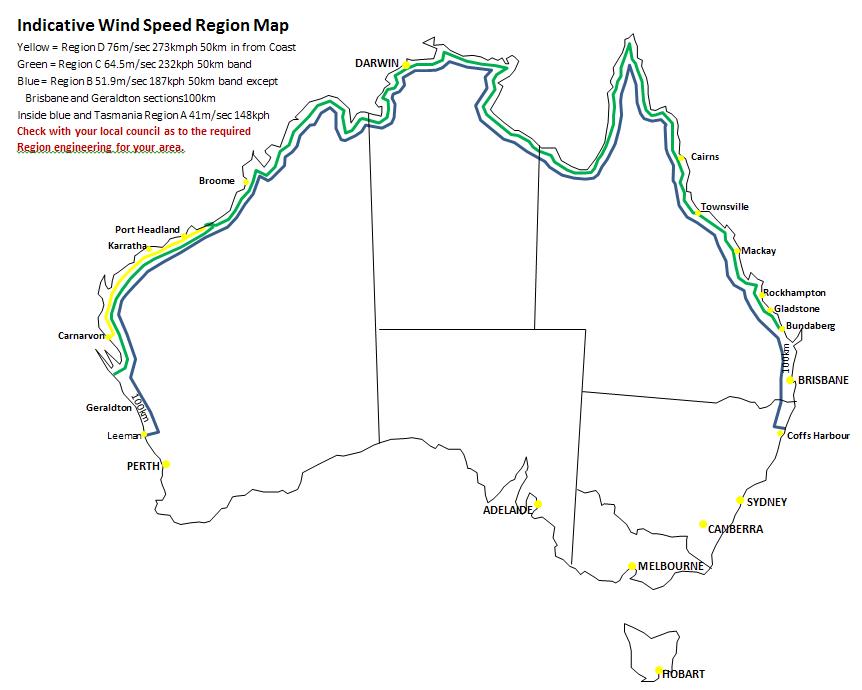The importance of wind ratings:
- The footing design for fabric structures are determined by the wind ratings designated for your area. Dome shaped buildings, at the apex, have a profile similar to an aircraft wing. When strong winds pass over the curved section it creates lift. The stronger the winds the more lift.
- This lift is substantial, even using the lowest “Region A” wind ratings, 41m/sec or 148kph (90mph). For a 16m (54′) wide shelter you require 510kg (1,100lb)/linear metre of container each side, so just over 6 tons of ballast in each container to hold it down in a severe wind. For a 12m (40″) wide structure in the same conditions you need 958kg (2,107lb)/linear metre of ballast. The smaller shelter needs almost double the ballast because the curve of the roof produces a very much higher lift.
- If you are within 10km of the coast, on a hill top, or in the bottom of a valley the winds will be higher than the regions average. Increasing the strength of your structure to the next higher wind rating is a very cheap insurance policy. Always check with your local building authorities as to the wind ratings used for your area.
- Wind ratings are designated by Australian standard 1170.2, The recent ratings are:
- Region A: this is the most common region in Australia and shelters need to be able to withstand winds of up to 147.6 km/h.
- Region B: certain areas in Australia are designated region B and shelters build there need to be able to withstand winds of up to 186.8 km/h
- Region C: for cyclone-prone areas, structures that are built in the region need to be able to cope with winds of up to 227.1 km/h.
- Region D: for a very small area of Australia only that is prone to severe tropical cyclones, shelters need to be able to handle wind speeds of up to 288.3 km/h.
The map below gives an overview of the wind ratings, but always check with your local councils as to the rating in your area.

